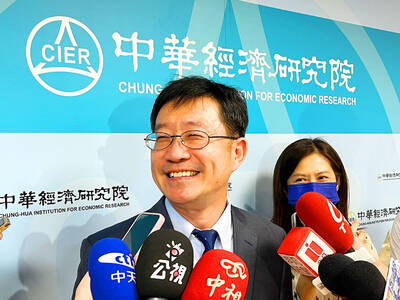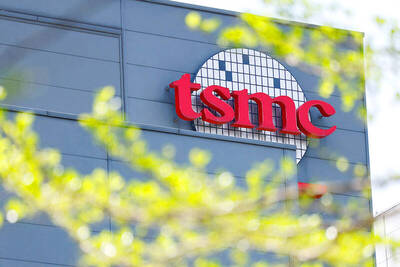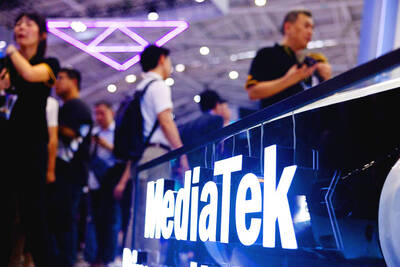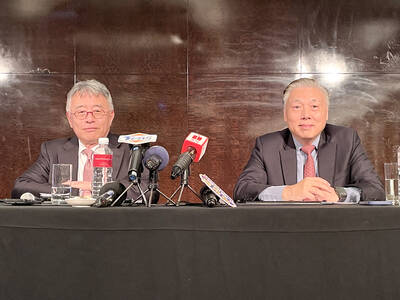Innolux Corp (群創) and AU Optronics Corp (AUO, 友達光電) are to ship the world’s first ultra-high-definition 8K LCD TV panels next quarter, one quarter ahead of their South Korean rivals, in an attempt to repeat the success in unveiling 4K panels, market researcher TrendForce Corp (集邦科技) said yesterday.
Innolux started shipping a small volume of 65-inch 8K TV panels for customers, while AUO is to ship 65-inch 8K TV panels for global TV vendors next quarter, according to WitsView, an LCD research team of TrendForce.
South Korean panel makers, led by LG Display Co, are expected to unveil 98-inch and 65-inch 8K TV panels at the end of this year, WitsView said.
BOE Technology Group (京東方), China’s largest panel maker, might ship its first 8K TV panels in the second half of next year, the researcher said.
“The 8K TV panel is a business opportunity for Taiwanese LCD manufacturers as long as they do not engage in a capacity race with their rivals,” WitsView senior research director Eric Chiou (邱宇彬) said by telephone.
Executives from Innolux and AUO have said that they will focus on developing products with higher value and better margins in an effort to differentiate themselves from Chinese latecomers and to avoid a price war.
The companies have completely exited the standard 32-inch LCD TV panel market.
8K panels have a pixel density of 4,320 pixels per inch, double that of 4K panels and 16 times that of full high-definition panels.
However, this time, local panel makers might not be able to benefit from selling 8K panels as much as they did in introducing 4K TV panels, Chiou said.
Taiwanese firms are limited by their capacity, as 8K TV panels are mostly for bigger TVs, starting with 65-inch models, he said.
That is compared with entry-level 4K TV at 40 inches.
WitsView expects slow uptake of 8K LCD TVs, citing the lack of a mature ecosystem.
Only a few 8K LCD TVs will be available on the market this year, WitsView said, adding that these will be equipped with 4K chips, as 8K chips are under development.
By 2018, the penetration rate will only reach low single-digit percentages, Chiou forecast.
Another hurdle is a lack of 8K contents, the researcher said.
Apart from Japan, almost no content providers are developing 8K programs, it said.

WEAKER ACTIVITY: The sharpest deterioration was seen in the electronics and optical components sector, with the production index falling 13.2 points to 44.5 Taiwan’s manufacturing sector last month contracted for a second consecutive month, with the purchasing managers’ index (PMI) slipping to 48, reflecting ongoing caution over trade uncertainties, the Chung-Hua Institution for Economic Research (CIER, 中華經濟研究院) said yesterday. The decline reflects growing caution among companies amid uncertainty surrounding US tariffs, semiconductor duties and automotive import levies, and it is also likely linked to fading front-loading activity, CIER president Lien Hsien-ming (連賢明) said. “Some clients have started shifting orders to Southeast Asian countries where tariff regimes are already clear,” Lien told a news conference. Firms across the supply chain are also lowering stock levels to mitigate

Six Taiwanese companies, including contract chipmaker Taiwan Semiconductor Manufacturing Co (TSMC, 台積電), made the 2025 Fortune Global 500 list of the world’s largest firms by revenue. In a report published by New York-based Fortune magazine on Tuesday, Hon Hai Precision Industry Co (鴻海精密), also known as Foxconn Technology Group (富士康科技集團), ranked highest among Taiwanese firms, placing 28th with revenue of US$213.69 billion. Up 60 spots from last year, TSMC rose to No. 126 with US$90.16 billion in revenue, followed by Quanta Computer Inc (廣達) at 348th, Pegatron Corp (和碩) at 461st, CPC Corp, Taiwan (台灣中油) at 494th and Wistron Corp (緯創) at

NEW PRODUCTS: MediaTek plans to roll out new products this quarter, including a flagship mobile phone chip and a GB10 chip that it is codeveloping with Nvidia Corp MediaTek Inc (聯發科) yesterday projected that revenue this quarter would dip by 7 to 13 percent to between NT$130.1 billion and NT$140 billion (US$4.38 billion and US$4.71 billion), compared with NT$150.37 billion last quarter, which it attributed to subdued front-loading demand and unfavorable foreign exchange rates. The Hsinchu-based chip designer said that the forecast factored in the negative effects of an estimated 6 percent appreciation of the New Taiwan dollar against the greenback. “As some demand has been pulled into the first half of the year and resulted in a different quarterly pattern, we expect the third quarter revenue to decline sequentially,”

ASE Technology Holding Co (ASE, 日月光投控), the world’s biggest chip assembly and testing service provider, yesterday said it would boost equipment capital expenditure by up to 16 percent for this year to cope with strong customer demand for artificial intelligence (AI) applications. Aside from AI, a growing demand for semiconductors used in the automotive and industrial sectors is to drive ASE’s capacity next year, the Kaohsiung-based company said. “We do see the disparity between AI and other general sectors, and that pretty much aligns the scenario in the first half of this year,” ASE chief operating officer Tien Wu (吳田玉) told an